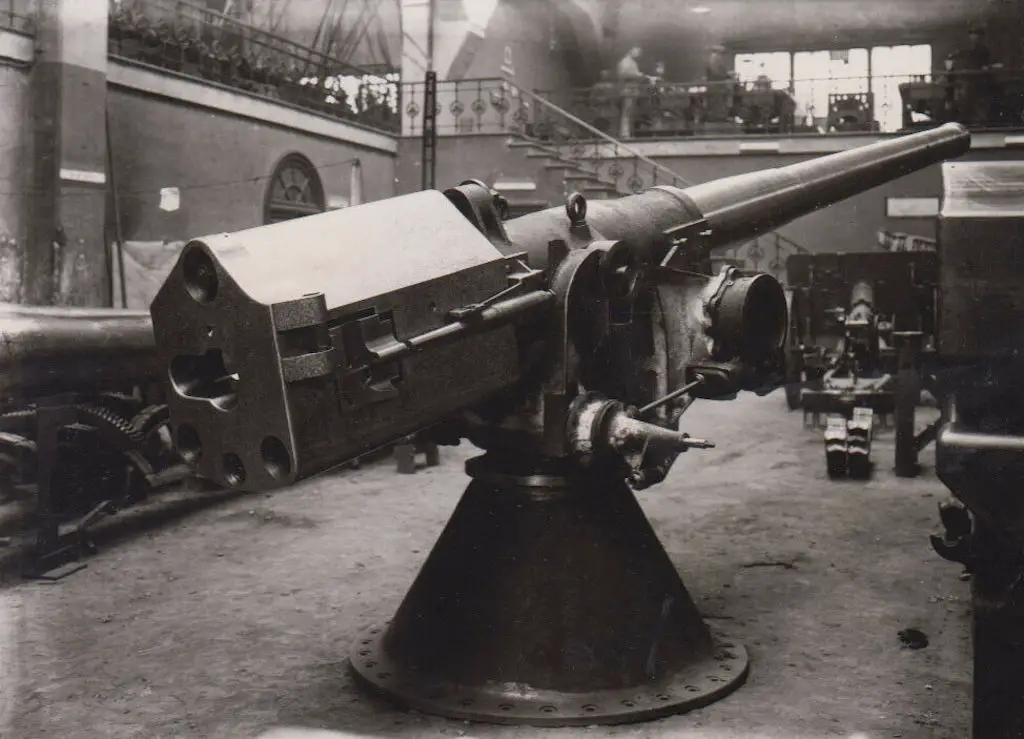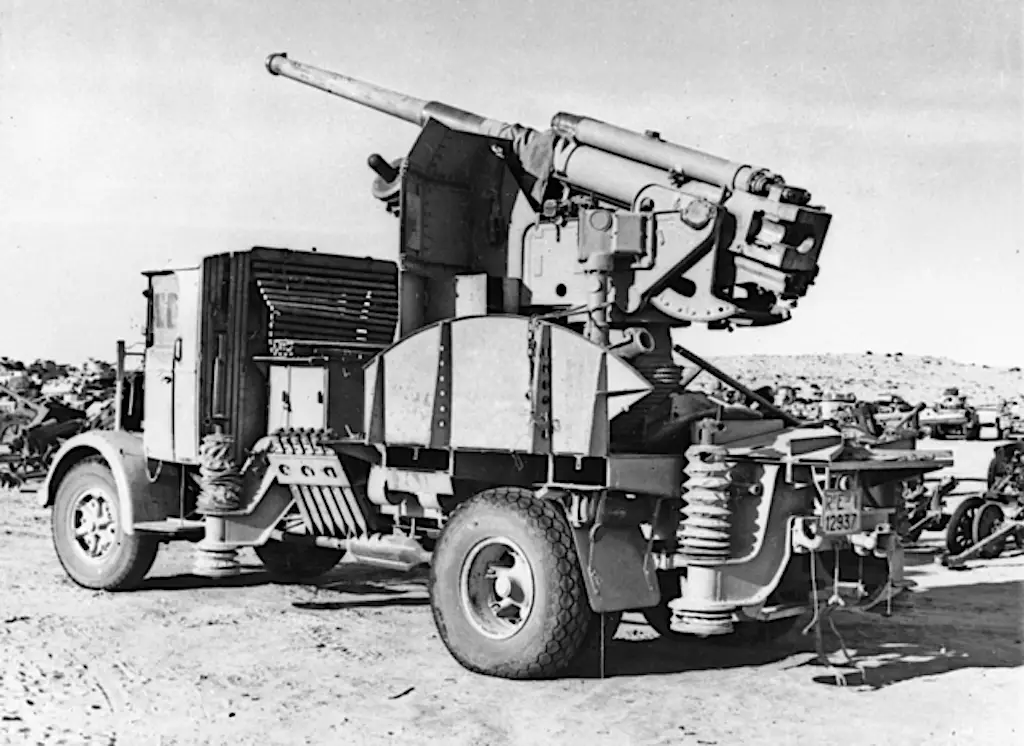Overview of the Cannone da 90/53
Designed by Ansaldo, the Cannone da 90/53 was a formidable dual-purpose artillery piece of the Regio Esercito. The cannon boasted fantastic ballistic capabilities, but the Italian industrial base wasn’t up to the task of delivering it in numbers. Production fell short of orders by two thirds, but those cannons that reached the front gave a terrific performance. Deployed from static and mobile emplacements, trucks, and tank destroyers, it struck fear into Allied soldiers and tankers.

Derived from the Cannone da 90/50 Mod. 1938 naval gun, it originated as an antiaircraft weapon. It paralleled the more famous German Flak 18 88mm, which their Axis partners often employed as field artillery. Rommel, in particular, is famous for use of heavy antiaircraft artillery in the anti-tank role throughout his career. First at the 1940 Battle of Arras, and later in numerous North African battles alongside Italian forces. Drawing from this experience, the Italian 90mm cannon grew into an all-purpose role. It deterred air attacks quite effectively, devastated infantry with indirect fire, and destroyed any tank the Allies might field. Such powerful guns were a valuable tool in 1943, and the Germans seized as many as they could after the Italian armistice.
Characteristics
Six men are required, to effectively operate the 6,240 kg heavy cannon. The 90mm gun barrel was 4.736m, or 53 caliber-lengths long. Possessing such a long, high-caliber barrel produced incredible effective ranges. When engaging ground targets in the vast Libyan desert, it dominated the battlefield for 17.4 km! When engaging aerial targets, the cannon’s fire was effective out to 12 km. Traveling at 850 m/s, the 10.3 kg shell carried a punch that even light naval vessels ought to be wary of. With an elevation of -2° to +85° and an efficient 360° turret traverse, a well-positioned 90mm menaced anything, save a heavier gun. With a well-rested, properly trained crew, the cannon might maintain a rate of fire of 19 rounds per minute.

Ansaldo Cannone da 90/53.
The value of the cannon was quickly realized, and the Regio Esercito placed a total order of 1,804 90mm cannons. However, fantastic performance comes at a cost. It was no simple weapon, and real production never approached such lofty figures. By the time of the July 1943 Armistice and the end of production, only 539 had been completed. Of these, delays were commonplace, sometimes due to lack of an adequate mounting for the gun. As a result, a common procedure was to mount them on flatbed trucks.
Uses and Variants
Of the original order for 1,804 units, the Modello 41P constituted 1,087 of these. Destined for static use, these might defend cities, ports, rail lines, and other such locations. The Modello 41C, a towed variant, represented 660 units intended for front line service. The final 57 guns had mobile use on heavy trucks as their purpose, designated the autocannoni da 90/53. The numbers indicate that the weapon was thought of mostly for its value in strategic defense. However, the industrial orders still made ample room for tactical deployment.

A February 1943 photo of a Cannone da 90/53 mounted on a Lancia truck in North Africa.
On Amazon: The Encyclopedia of Weapons of World War II
The Regio Esercito happened upon a final platform for the Cannone da 90/53, the Semovente da 90/53, once the war had begun. Searching for a heavy tank destroyer capable of defeating the T-34, this was the solution. To mount a 90mm gun on a lengthened M14 chassis, which employed ‘Effeto Pronto’ HEAT rounds. The Semovente da 90/53 had its shortcomings, such as a small load of ammunition and poor armor protection, but enjoyed some success. Of the 539 90/53 guns actually produced, 45 found themselves in this role.
Service Beyond Italy
While Italy was, by far, the primary user of the Cannone da 90/53, other nations had some use for it. The Germans seized as many as possible, quite a few serving in the Defense of the Reich as the 9-cm Flak 309/l(i). However, this was not the end of the road for the weapon. Yugoslavia inherited a handful of the 90mm cannons, and they fought again, half a century later, in the Croatian War of Independence. In the critical Battle of Sibenik, a battery of two antiques bottled up a quarter of the Yugoslav Navy. The final result was decisive Croatian victory, made possible by the reliability and performance of the Cannone da 90/53.
Specifications
| Model | Cannone da 90/53 |
|---|---|
| Caliber | 3.54" (90 mm) |
| Length | 16.6" (5.039 m) |
| Weight | 19,730 lbs (8,950 kg) |
| Rate of Fire | 19 RPM |
| Muzzle Velocity | 2,789 ft/s (850 mps) |
| Maximum Range | 10.8 miles (17.4 k) |
| Shell Weight | 23 lb (10.3 kg) |
| Traverse | 360º |
| Elevation | -2° to +85° |